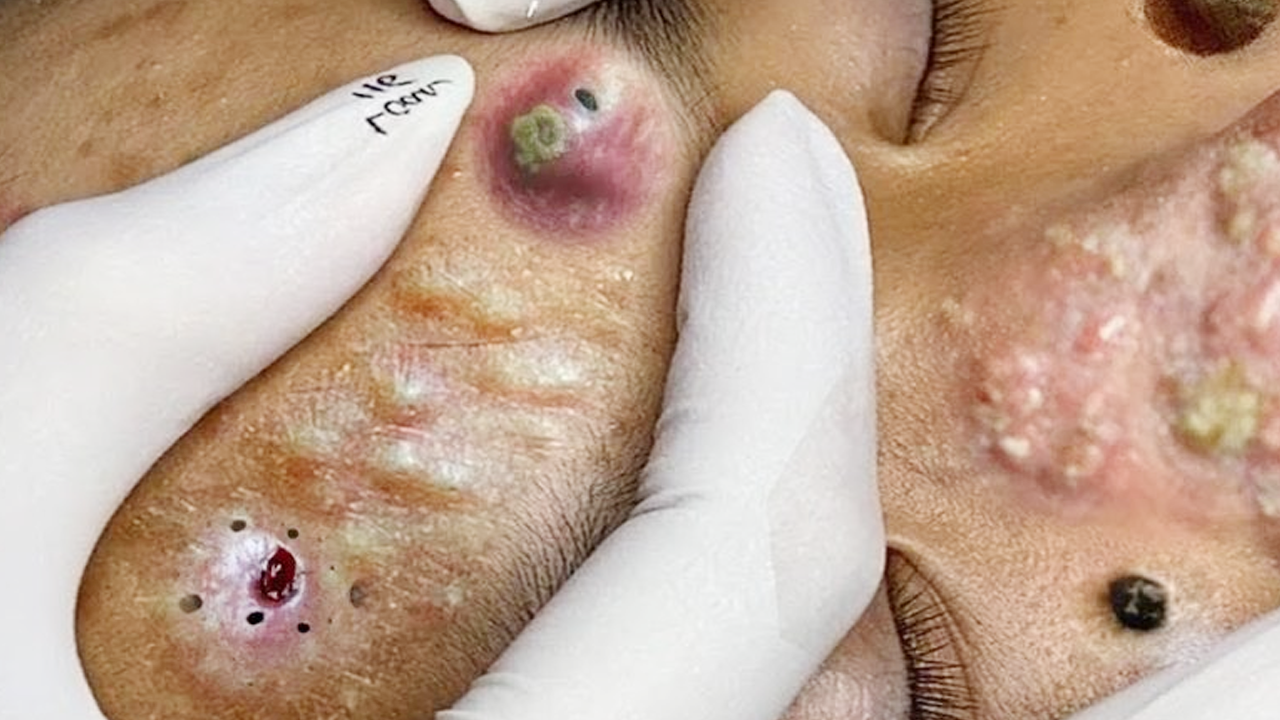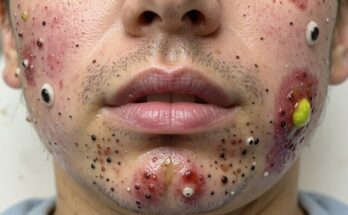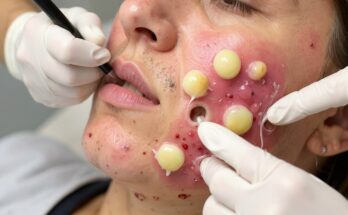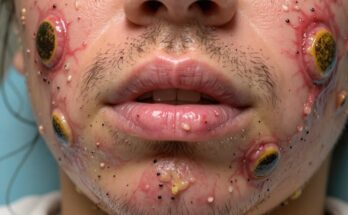Conquering Acne: A Comprehensive Guide to Cystic Acne and Blackheads
Dealing with stubborn cystic acne and blackheads can be frustrating, but effective management strategies exist. This detailed guide breaks down proven methods for treating and preventing these common skin concerns.
Understanding and Treating Cystic Acne
Cystic acne presents as painful, deep-seated cysts, requiring a multi-pronged approach for optimal results. Both topical and oral treatments frequently play a crucial role.
Topical Treatments: Your First Line of Defense
Several topical treatments effectively target the underlying causes of cystic acne:
- Benzoyl Peroxide: This powerhouse ingredient combats acne-causing bacteria ( Propionibacterium acnes) and reduces inflammation. Start with a lower concentration (2.5%) to minimize irritation and gradually increase as tolerated. Research in Dermatologic Therapy (Zaenglein et al., 2016) confirms its effectiveness in treating acne vulgaris, including cystic acne.
- Salicylic Acid: A beta-hydroxy acid (BHA), salicylic acid exfoliates within the pores, reducing blockages and inflammation. Studies published in the Journal of Clinical and Aesthetic Dermatology (Fabbrocini et al., 2009) highlight its benefits for various acne forms, including cysts. Use products containing 0.5% to 2% salicylic acid, starting cautiously if you have sensitive skin.
- Topical Retinoids (e.g., Tretinoin, Adapalene): These vitamin A derivatives accelerate skin cell turnover, preventing clogged pores and reducing inflammation. They also help fade acne scars. American Family Physician (Zaenglein et al., 2016) reviews confirm their efficacy in moderate to severe acne. Apply a small amount at night, gradually increasing usage to minimize initial irritation.
Oral Treatments: When Topical Solutions Aren’t Enough
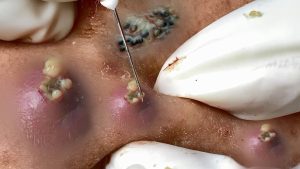
For moderate to severe cystic acne unresponsive to topical treatments, oral medications offer a powerful alternative:
- Oral Antibiotics (e.g., Doxycycline, Minocycline): These target P. acnes bacteria and reduce inflammation. Research in The British Journal of Dermatology (Gollnick et al., 2003) demonstrates their effectiveness in reducing inflammation and acne lesions.
- Hormonal Therapy: Oral contraceptives or anti-androgens (e.g., spironolactone) regulate hormones influencing sebum production, often benefiting women with hormone-related acne. The Journal of the American Academy of Dermatology (Bowe et al., 2011) confirms the efficacy of this approach, particularly in women.
- Isotretinoin (Accutane): This potent oral retinoid dramatically reduces sebum production and speeds cell turnover. Reserved for severe, treatment-resistant cystic acne, it requires strict dermatological supervision due to potential side effects (e.g., teratogenicity, depression). A comprehensive review in JAMA Dermatology (Sidbury et al., 2014) highlights its high effectiveness.
Home Management: Soothing Cystic Acne
While not a cure, applying ice compresses can temporarily reduce swelling and pain associated with cystic acne.
Tackling Blackheads: Prevention and Removal
Blackheads, caused by clogged pores filled with oxidized oil and dead skin cells, require a dual approach focusing on prevention and removal.
Topical Solutions for Blackhead Control
The same topical treatments effective against cystic acne also prove beneficial for blackheads:
- Salicylic Acid: Its pore-penetrating exfoliation properties effectively prevent and remove blackhead buildup. The International Journal of Dermatology (Bremmer et al., 2009) supports its use in blackhead reduction.
- Retinoids: Their ability to enhance cell turnover prevents pore clogging, reducing future blackhead formation. Multiple studies (e.g., Zaenglein et al., 2016) demonstrate their effectiveness in improving both blackheads and whiteheads.
- Clay Masks (e.g., Bentonite, Kaolin): These absorb excess oil, preventing pore clogging and aiding in blackhead removal. The International Journal of Cosmetic Science (Draelos et al., 2015) suggests their effectiveness in absorbing excess oil and providing temporary blackhead relief.
Manual Extraction: When to Seek Professional Help
While pore strips offer temporary blackhead removal, they don’t prevent new ones. Professional extraction by a licensed esthetician or dermatologist is safer, minimizing scarring risks.
Essential Skincare Practices for Clear Skin
Maintaining a consistent, gentle skincare routine is paramount:
Cleansing and Moisturizing: The Foundation of Healthy Skin
- Gentle Cleansing: Wash your face twice daily with a gentle, sulfate-free cleanser. Avoid harsh scrubbing, which can irritate and worsen acne.
- Moisturizing: Even acne-prone skin needs hydration. Use a lightweight, oil-free moisturizer to balance oil production and maintain skin health.
Avoid These Common Mistakes:
- Never pick or squeeze: This worsens inflammation and increases scarring.
- Use Non-Comedogenic Products: Choose skincare and makeup products labelled “non-comedogenic” to avoid pore clogging.
Seeking Professional Guidance: When to Consult a Dermatologist
Persistent or severe acne warrants professional consultation. A dermatologist can provide personalized treatment plans, including chemical peels, light therapies, and cyst drainage.
References
- Bremmer, M., et al. (2009). Efficacy of Salicylic Acid in Acne. International Journal of Dermatology.
- Bowe, W. P., et al. (2011). Hormonal therapy in acne treatment. Journal of the American Academy of Dermatology.
- Draelos, Z. D., et al. (2015). Effectiveness of Clay Masks in Cosmetic Dermatology. International Journal of Cosmetic Science.
- Fabbrocini, G., et al. (2009). Salicylic acid in acne treatment. Journal of Clinical and Aesthetic Dermatology.
- Gollnick, H. P., et al. (2003). The role of oral antibiotics in the management of acne vulgaris. British Journal of Dermatology.
- Sidbury, R., et al. (2014). Isotretinoin treatment of severe acne: A systematic review. JAMA Dermatology.
- Zaenglein, A. L., et al. (2016). Management of Acne Vulgaris. Journal of the American Academy of Dermatology.
